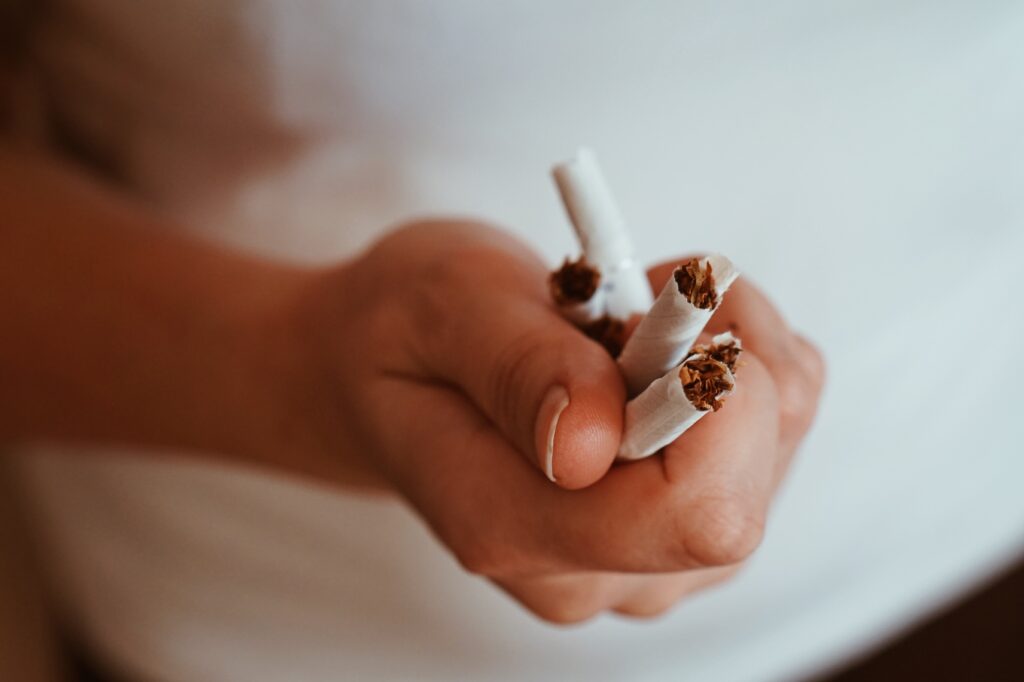Smoking has long remained to be the leading cause of preventable death in the United States. Each year, one in five deaths have been attributed to smoking, according to CDC. Quitting smoking lessens the risk for smoking-related diseases in nearly every organ of the body and can add years to your life.
Both public and private sectors are making different strategies to help smokers quit the habit. From lifestyle changes and joining support groups to nicotine replacement and cognitive behavioral therapy, the positive effects of smoking cessation will greatly improve a person’s wellbeing and ultimately improve general health.
Some may ask, will I still improve my health even if I smoke for 15 years? The answer is yes. Remember that time is on our side: the earlier you quit, the more your body will thank you for it.
Here are the health benefits of smoking cessation:
20 minutes
Quitting for 20 minutes lowers down your heart rate and blood pressure. The lowering can be attributed to decreasing levels of nicotine in your system.
Nicotine causes the walls in your arteries to harden. This becomes problematic because when the arterial walls harden, it causes narrowing of arteries, making oxygen delivery by red blood cells ineffective. The body compensates by pumping more blood, increasing heart rate and blood pressure. Your body does a great job in improving blood flow within minutes of smoking cessation.
12 hours
Your carbon monoxide levels in your blood become normal.
Carbon monoxide is a gas produced when you smoke. It can bind 200 times more to your red blood cells than oxygen, and if that happens, the ability to deliver oxygen becomes impaired. Eliminating the toxic levels of carbon monoxide within the day would result in effective oxygen delivery to your body.
1-3 months
Oxygen circulation improves, and your lung function increases.
Our respiratory system contains tubes where air moves in and out of your lung. With smoking, these tubes become inflamed and irritated, impairing gas exchange. The body compensates by coughing to clear out chemicals that cause irritation. Over time, the cough develops into phlegm, and the difficulty of coughing out the phlegm makes it hard for smokers to breathe. After three months of quitting, phlegm production lessens and therefore improves breathing.
3-9 months
Coughing and shortness of breath decreases.
Normally, our respiratory system contains tiny hairs called cilia to cough out irritants in our lungs and lessen infection. Smoking will destroy cilia. In 3 months after you stop smoking, cilia will start to grow back to help clear phlegm, reducing your cough and significantly decreases shortness of breath and coughing.
1 year
Your coronary heart disease risk will be about half that of a smoker’s.
After one year of quitting, you will have lower blood pressure, heart rate, and blood oxygen levels attributing to better blood circulation.
5 years
The risk of having a stroke is lessened to that of a nonsmoker 5 to 15 years after quitting.
Smoking hastens the formation of blood clots that can lead to a possible stroke. As early as five years after you quit, your risk falls the same as someone who doesn’t smoke.
10 years
The risk of having lung cancer falls to about half that of a smoker. Your risk of having cancer of the mouth, throat, esophagus, bladder, cervix, and pancreas decreases, too.
15 years
The risk of having coronary heart disease is reduced to that of a nonsmoker.
Smoking cessation in the time of COVID-19
With all the related illnesses from smoking, such as heart disease, stroke, lung cancer, and other cancers, smokers are more vulnerable to contracting COVID-19. WHO has emphasized the risks of smoking and its association with increased severity of disease and death in hospitalized COVID-19 patients.
Quitting may be as easy as cold turkey for some, but days can be hard when withdrawal symptoms arise. Efforts to support smoking cessation include promoting telehealth to help adhere to therapy while helping decrease hospital burdens during and beyond the pandemic. When partnered with remote patient monitoring, such as DrKumo’s state-of-the-art wearable health technology devices, telehealth could be useful for detecting early withdrawal symptoms and reinforce general health wellbeing with continuous monitoring and regular surveillance among smokers.
Takeaway
Smoking cessation greatly relies on willpower, but with telehealth and RPM, you don’t have to do it alone. By being aware of the health benefits of quitting, smokers will feel more empowered knowing how a single day of not smoking can improve their health, and therefore, increase their chances of quitting smoking successfully.
Reference:
https://www.who.int/news-room/q-a-detail/tobacco-health-benefits-of-smoking-cessation











